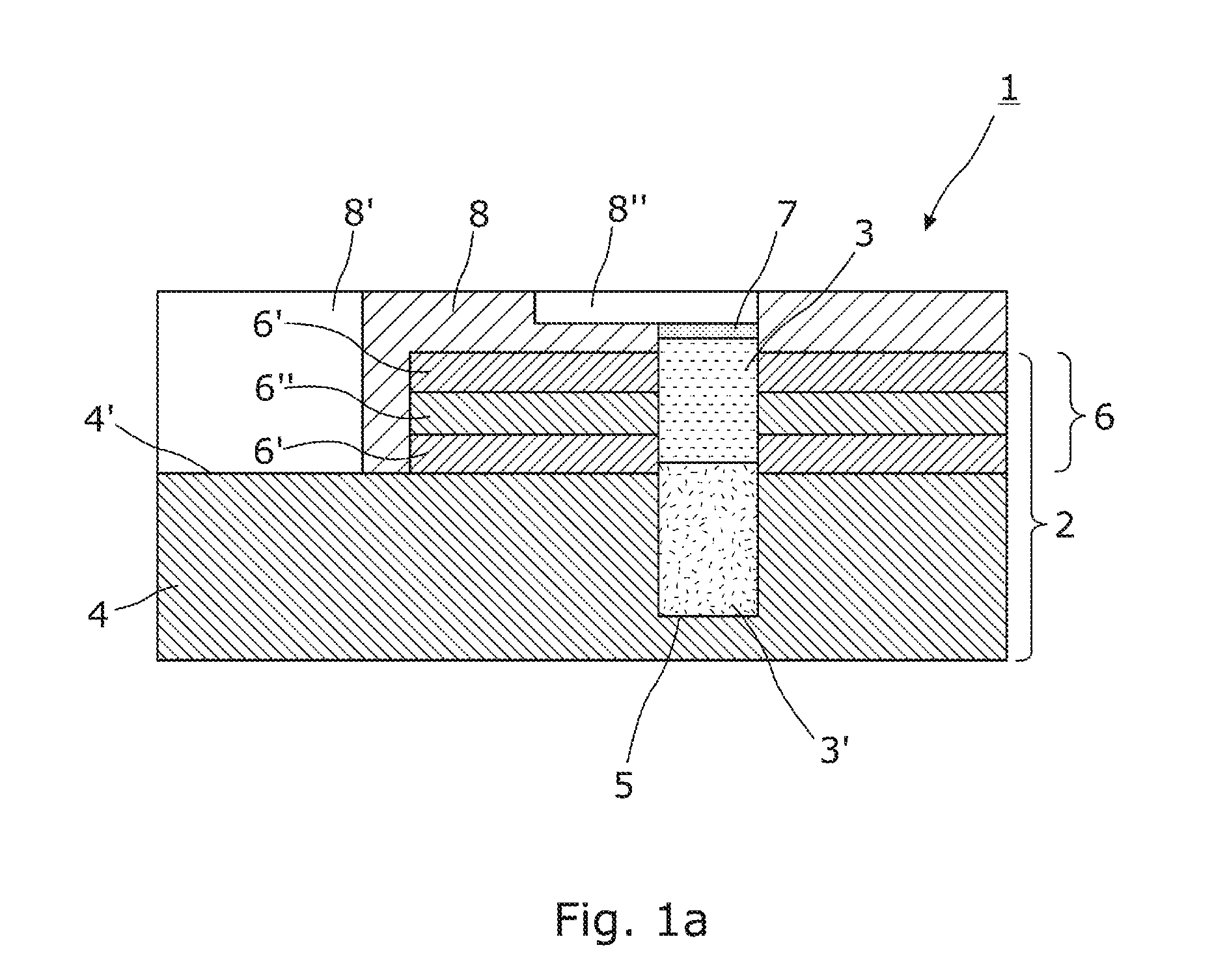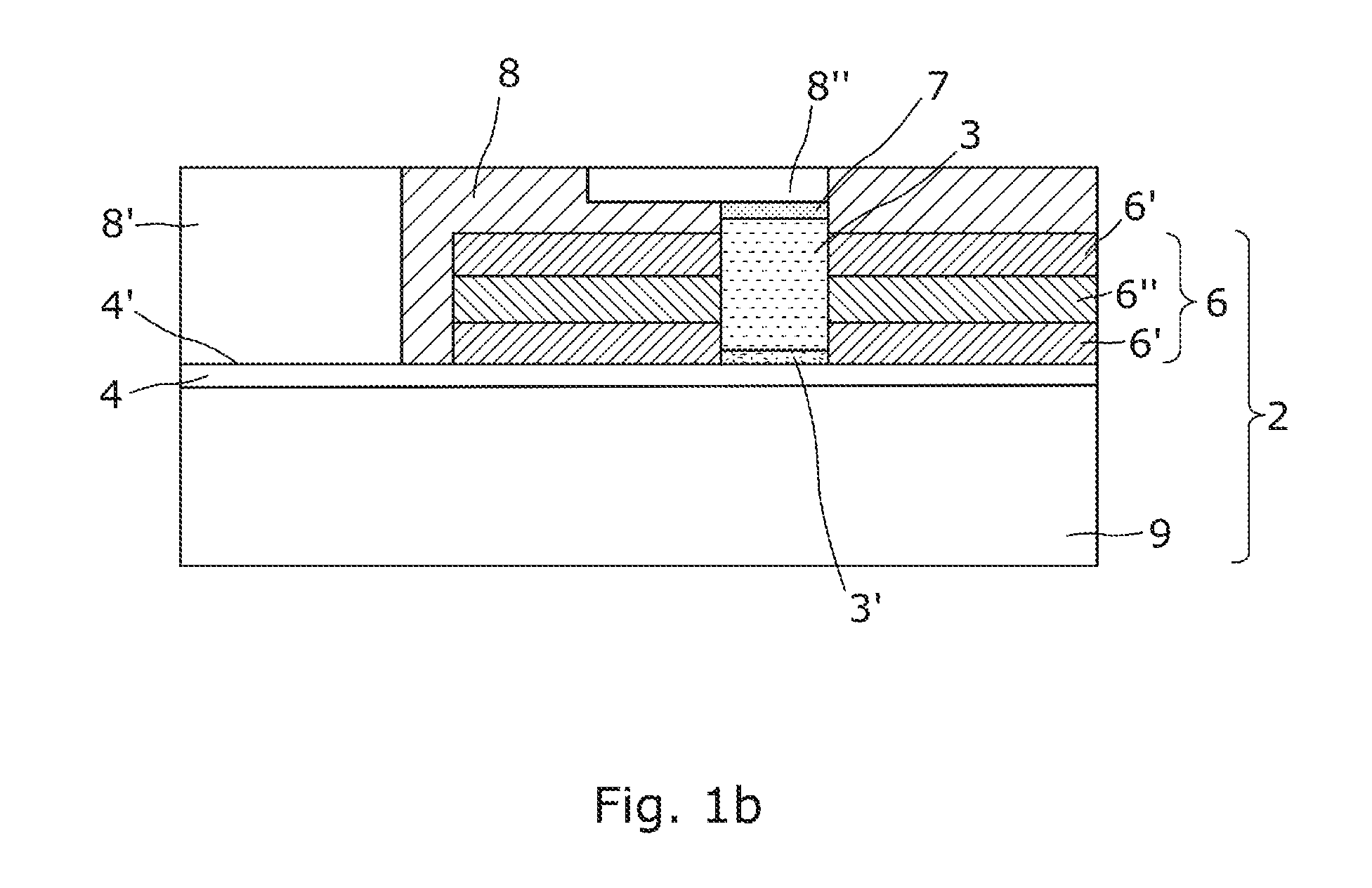Semiconductor device
a semiconductor and device technology, applied in semiconductor lasers, instruments, optical elements, etc., can solve the problems of non-trivial monolithic integration of iii-v based light sources on silicon platforms, time-consuming and difficult to achieve relatively high-precision alignment, and achieve easy integration/implementation, widening a range of applications/optical systems, and easy fabrication and/or integration.
- Summary
- Abstract
- Description
- Claims
- Application Information
AI Technical Summary
Benefits of technology
Problems solved by technology
Method used
Image
Examples
Embodiment Construction
[0060]Within the description, the same reference numerals or signs have been used to denote the same parts or the like.
[0061]Reference is now made to FIG. 1a showing a semiconductor device 1 according to an embodiment of a first aspect of the present invention comprising at least an optically passive aspect or region 2 that, when the semiconductor device 1 is in use, is operable in substantially an optically passive mode for the transmission and / or coupling of light from a given location to a desired location, rather than for the generation, amplification, detection and / or modulation of light. The optically passive aspect 2 is structured thereby to comprise at least a predefined structure 5, which extends to at least an upper surface 4′ of a crystalline seed layer 4 provided in respect of the optically passive aspect 2 or even into the crystalline seed layer 4 as for a given embodiment of the present invention as shown in FIG. 1a. There is also provided at least an optically active ...
PUM
 Login to View More
Login to View More Abstract
Description
Claims
Application Information
 Login to View More
Login to View More - R&D
- Intellectual Property
- Life Sciences
- Materials
- Tech Scout
- Unparalleled Data Quality
- Higher Quality Content
- 60% Fewer Hallucinations
Browse by: Latest US Patents, China's latest patents, Technical Efficacy Thesaurus, Application Domain, Technology Topic, Popular Technical Reports.
© 2025 PatSnap. All rights reserved.Legal|Privacy policy|Modern Slavery Act Transparency Statement|Sitemap|About US| Contact US: help@patsnap.com



